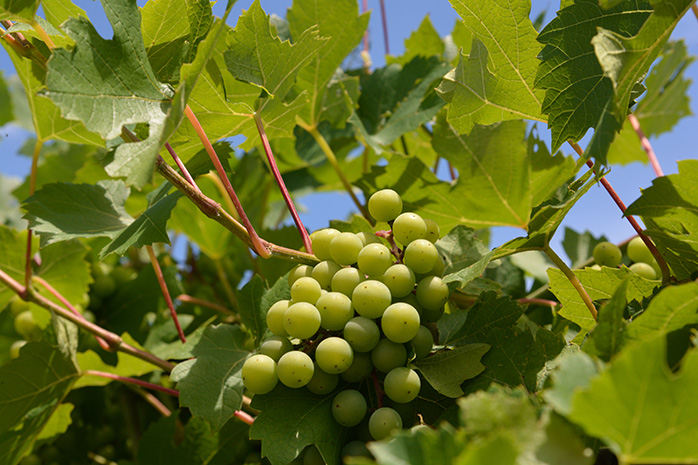Vineyard Timeline
February-March: Pruning
The vineyard crew prepares the future crop load by trimming roughly 80% of the grapevine shoots in our 30 acres of vines. Shoot-thinning, leaf-combing and green-pruning will expose the grapes to the sun for better ripening come early summer.
April-June: Bud break & Bloom
Warmer spring temperatures cause the buds on the grapevines to develop, break and bloom. The blooms will soon produce tiny bunches of grapes. After bud break, the crop is especially vulnerable to frost. The vineyard crew works on suckering, or removing unwanted shoots that sprout on the stock of the vine.
July-August: Véraison & Ripening
Véraison — the color change of the grapes during ripening — progresses in the months leading up to harvest. To avoid stress on the vines and to improve flavor quality and consistency in the grapes, the vineyard crew green-harvests, removing green grape clusters that have fallen behind the rest of the vineyard in véraison. Dry, mild, sunny days are ideal ripening conditions for the grapes.
Late August-Early September: Harvest
We harvest our estate- and Wisconsin-grown grapes once they reach optimal ripeness, usually around Labor Day. Winemaker Philippe decides when to start picking based on four factors: sugar level, pH and taste of the grapes, and weather. We crush, press and ferment our grapes — estate-grown and non-estate-grown — here at the winery.

November: First Taste
Ruby Nouveau, released on the traditional Nouveau Day (the third Thursday in November), is the first taste of the harvest and a glimpse at the potential of the year’s vintage. Made from estate-grown Maréchal Foch and Millot grapes in the traditional Beaujolais style of whole-berry fermentation, Ruby Nouveau is fruity and zesty with notes of red fruits.
December: Nectar of the Vines
Our climate allows us to make true Ice Wine, which comes from grapes that we leave on the vine into late fall to freeze. In December, we hand-harvest one acre of frozen St. Pepin grapes, and crush and press them while they’re still frozen. The icy grapes produce a condensed juice full of highly-concentrated aromatics and sugars. After a long, slow, cool fermentation, the juice becomes a rich, golden wine with nuances of stone fruit, orange zest and honey.
